Shocked Medical Practices
As a matter of fact, intentionally no any doctor can show his/her negligence while treating his/her patients. But sometimes some mishaps occur in the course of medical treatment which does not call for any harsh punishment. It is essential to note that the protection of patient’s right should not be at the cost of professional integrity and autonomy. There is definitely a need for striking a delicate balance……
By Amresh kumar Tiwary
Recently trouble mounted for both Delhi Shalimar Bag’s Max hospital and Gurgaon’s Fortis hospital in death case due to negligence as claimed by their family members challenged credibility of medical practices.
The first case relates to the death of a 7-year-old girl, who was admitted in September to the Fortis Hospital, Gurgaon. The parents of the girl had alleged they were billed Rs 16 lakh, which also included the cost of 2,700 gloves.The hospital has charged the family over a lakh rupees per day for fifteen days after they admitted their 7-year-old daughter, Adya, to the hospital for treatment of dengue. Adya was declared dead on September 15. 2017.
The hospital in the bill showed that 2,700 gloves and 600 syringes were used in 15 days during her treatment. They even charged us for the cloth they wrapped our daughter in after she died. The hospital charged us Rs. 4 lakh for medicines. Adya was detected with Dengue in August and admitted to Rockland Hospital in Dwarka Sector 12. After five days she was shifted from Rockland Hospital to Fortis Hospital in Gurugram, where the 7-year-old was immediately put on a ventilator without informing her parents.
After being put on a ventilator, Adya’s condition deteriorated as her brain and kidneys also got affected.Haryana health minister Anil Vijsaid the state government has lodged an FIR against the hospital for criminal negligence on their part and cancelled their land lease.The land was provided to the hospital at concessional rates on the condition that it will provide 20 per cent beds and other health amenities at concessional rates to the poor patients.
 Day after Delhi government cancelled now resumed the license of Shalimar Bagh’s Max Hospital in case of a baby declared dead by the hospital was found to be alive. A 20-year-old Varsha gave birth to premature twins at the hospital. While the baby girl was declared stillborn, the baby boy was declared dead a few hours later.
Day after Delhi government cancelled now resumed the license of Shalimar Bagh’s Max Hospital in case of a baby declared dead by the hospital was found to be alive. A 20-year-old Varsha gave birth to premature twins at the hospital. While the baby girl was declared stillborn, the baby boy was declared dead a few hours later.
As the family was taking the bodies for their last rites, the baby boy was found breathing. He was admitted to a private nursing home, where he stayed till his death.
The enquiry found that the hospital failed to keep proper temperature and vital sign monitor record of the period of comfort care provided to the live male newborn, the cancellation order reads. The panel under Director General of Health Services (DGHS) found that the staff nurses had handed over the bodies of the babies without written directions from a pediatrician and missed the signs of life. The hospital had also entered the baby boy’s name in a register of stillbirths, the inquiry found, leading the DGHS to say it was prima facie a case of medical negligence.
Medical negligence is an oft-quoted but much-abused term today. To begin with, it is important to know what constitutes medical negligence. In simple terms, the doctor owes certain duties to the patient who consults him for illness, any deficiency in this duty results in negligence.
 According to Dr A K Agarwal, Professor of Excellence and Medical Advisor, Appolo Group of Hospitals, doctors need a basic knowledge of how medical negligence is adjudicated in courts of law to help them practice their profession without undue worry about facing litigation for alleged medical negligence. As a matter of fact, intentionally no any doctor can show his/her negligence while treating his/her patients. But sometimes some mishaps occur in the course of medical treatment which does not call for any harsh punishment. Such disputes must be solved amicably.
According to Dr A K Agarwal, Professor of Excellence and Medical Advisor, Appolo Group of Hospitals, doctors need a basic knowledge of how medical negligence is adjudicated in courts of law to help them practice their profession without undue worry about facing litigation for alleged medical negligence. As a matter of fact, intentionally no any doctor can show his/her negligence while treating his/her patients. But sometimes some mishaps occur in the course of medical treatment which does not call for any harsh punishment. Such disputes must be solved amicably.
Dr, Gridhar Gyani, Director General, Healthcare P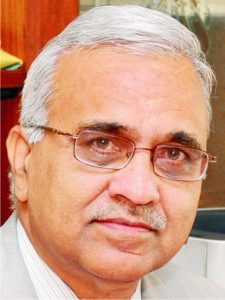 roviders of India, said, “There is a general perception that healthcare is expensive for the simple reason that the common man does not budget for it. Sickness is never anticipated and is considered as a not-likely-to-happen event. Under the circumstances, the cost of treatment for major ailments appears deceptively high. Yet another reason for such a perception comes as government run community health centers or hospitals extend free healthcare services. We do not realize that free healthcare is actually not free. It comes from the tax payer’s money.”
roviders of India, said, “There is a general perception that healthcare is expensive for the simple reason that the common man does not budget for it. Sickness is never anticipated and is considered as a not-likely-to-happen event. Under the circumstances, the cost of treatment for major ailments appears deceptively high. Yet another reason for such a perception comes as government run community health centers or hospitals extend free healthcare services. We do not realize that free healthcare is actually not free. It comes from the tax payer’s money.”
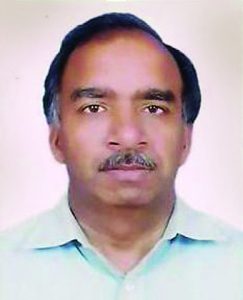 Dr Anup Mohta, Director, Chacha Nehru Bal Chiktsalya, East Delhi, said, “We must believe that as a matter of fact, no doctor intentionally is negligent while treating his/her patients. But sometimes errors of judgement may occur in the course of medical treatment which does not call for any harsh punishment.”
Dr Anup Mohta, Director, Chacha Nehru Bal Chiktsalya, East Delhi, said, “We must believe that as a matter of fact, no doctor intentionally is negligent while treating his/her patients. But sometimes errors of judgement may occur in the course of medical treatment which does not call for any harsh punishment.”
“It is essential to note that the protection of patient’s right should not be at the cost of professional integrity and autonomy. There is definitely a need for striking a delicate balance. The identification of minimum reasonable standards enables the medical professionals to internalize them in their day-to-day discharge of professional duties, minimizing instances of medical negligence,” Dr Mohta, said.
Dr Vinay Ag garwal, Former President, Indian Medical Association, New Delhi, said, “Today, there is a growing awareness regarding patient’s rights. This trend is clearly discernible from the recent spurt in litigation concerning medical professional or establishment liability, claiming redressal for the suffering caused due to medical negligence, vitiated consent, and breach of confidentiality arising out of the doctor-patient relationship.”
garwal, Former President, Indian Medical Association, New Delhi, said, “Today, there is a growing awareness regarding patient’s rights. This trend is clearly discernible from the recent spurt in litigation concerning medical professional or establishment liability, claiming redressal for the suffering caused due to medical negligence, vitiated consent, and breach of confidentiality arising out of the doctor-patient relationship.”
The patient-centered initiative of rights protection is required to be appreciated in the economic context of the rapid decline of State spending and massive private investment in the sphere of the health care system and the Indian Supreme Court’s painstaking efforts to constitutionalize the right to health as a fundamental right.
“In legal parlance, medical malpractice refers to professional negligence by a medical practitioner in which treatment provided was substandard, and caused harm, injury or death to a patient. In the majority of cases, the medical malpractice or negligence involved a medical error, possibly in diagnosis, medication dosage, health management, treatment or aftercare. Medical malpractice law provides a way for patients to recover compensation from any harms resulting from sub-standard treatment. The standards and regulations for medical malpractice differ slightly from country-to-country; even within some countries, jurisdictions may have varying medical malpractice laws.”Dr VinayAggarwal, said.
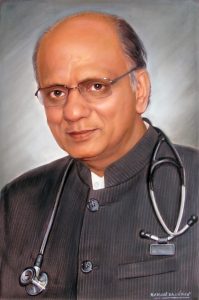
Padam Shri Dr K KAggarwal, President, Indian Medical Association, New Delhi, “A hospital, doctor or other healthcare professional is not liable for all the harms a patient might suffer. They are only legally responsible for harm or injuries that resulted from their deviating from the quality of care that a competent doctor would normally provide in similar situations, and which resulted in harm or injury for the patient.In the context of obtaining processes, there is a deserving need for a two-pronged approach.”
On one hand, the desirable direction points towards identification of minimum reasonable standards in light of the social, economical, and cultural context that would facilitate the adjudicators to decide issues of professional liability on an objective basis. On the other hand, such identification enables the medical professionals to internalize such standards in their day-to-day discharge of professional duties, which would hopefully prevent to a large extent the scenario of protection of patient’s rights in a litigative atmosphere. In the long run, the present adversarial placement of doctor and the patient would undergo a transformation to the benefits of both the parties.
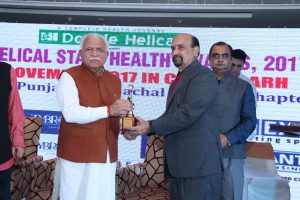 Dr S K Nanda, President, IMA, Himachal Pradesh, said, “In legal terms, a consumer is a person who hires or avails of any services for a consideration that has been paid or promised or partly paid and partly promised or under any system of deferred payment and includes any beneficiary of such services other than the person hires or avails of the services for consideration paid or promised, or under any system of deferred payment, when such services are availed of with the approval of the first mentioned person. This definition is wide enough to include a patient who merely promises to pay.”
Dr S K Nanda, President, IMA, Himachal Pradesh, said, “In legal terms, a consumer is a person who hires or avails of any services for a consideration that has been paid or promised or partly paid and partly promised or under any system of deferred payment and includes any beneficiary of such services other than the person hires or avails of the services for consideration paid or promised, or under any system of deferred payment, when such services are availed of with the approval of the first mentioned person. This definition is wide enough to include a patient who merely promises to pay.”
“Further, a complaint is an allegation in writing made by a Complainant like a consumer that he or she has suffered loss or damage as a result of any deficiency of service.Deficiency of service means any fault, imperfection, shortcoming, or inadequacy in the quality, nature, or manner of performance that is required to be maintained by or under any law for the time being in force or has been undertaken to be performed by a person in pursuance of a contract or otherwise in relation to any service.”Dr S K Nanda, said.
Basically, medical negligence is simply the failure to exercise due care. The three ingredients of negligence are being considered today like the defendant owes a duty of care to the plaintiff, the defendant has breached this duty of care; and, the plaintiff has suffered an injury due to this breach. Medical negligence is no different. It is only that in a medical negligence case, most often, the doctor is the defendant.
The duty owed by a doctor towards his patient, in the words of the Supreme Court is to bring to his task a reasonable degree of skill and knowledge and to exercise a reasonable degree of care. The doctor, in other words, does not have to adhere to the highest or sink to the lowest degree of care and competence in the light of the circumstance. A doctor, therefore, does not have to ensure that every patient who comes to him is cured. He has to only ensure that he confers a reasonable degree of care and competence.
Eventually we can say that though the same standard of care is expected from a generalist and a specialist, the degree of care would be different. In other words, both are expected to take reasonable care but what amounts to reasonable care with regard to the specialist differs from what amount of reasonable care is standard for the generalist. In fact, the law expects the specialist to exercise the ordinary skill of this speciality and not of any ordinary doctor.
As of now, the adjudicating process with regard to medical professional liability, be it in a consumer forum or a regular civil or criminal court, considers common law principles defining medical negligence. However, it is equally essential to note that the protection of patient’s right should not be at the cost of professional integrity and autonomy. There is definitely a need for striking a delicate balance. Otherwise, the consequences would be disastrous, to say the least.
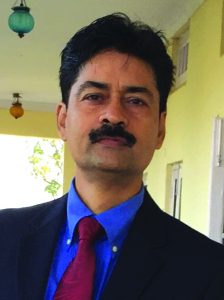 According to Dr H P Singh, Senior Child Specialist, Mother Child Care, Vaishali, Ghaziabad. there is hardly a gathering where medical profession is not being discussed with negative overtones. Not a day passes when the media does not draw attention to some event which serves to continue to multiply the trust deficit between public and medical professionals.
According to Dr H P Singh, Senior Child Specialist, Mother Child Care, Vaishali, Ghaziabad. there is hardly a gathering where medical profession is not being discussed with negative overtones. Not a day passes when the media does not draw attention to some event which serves to continue to multiply the trust deficit between public and medical professionals.
Highlighting of medical errors by media and violence faced by medical profession, has pushed them to the wall and has left them bewildered.A dispassionate analysis will reveal the problems to be at many levels. Let us look and discuss two major areas felt by the community and talked about in the media.
Dr Manisha Yadav, said, “Healthca re delivery has become so complex and hi-tech that even advanced countries are grappling with the issue of adverse events and unfavorable outcomes. The Joint Commission’s Annual Report on Quality and Safety 2007 found that inadequate communication between healthcare providers, or between providers and the patient and family members, was the root cause of over half the serious adverse events even in accredited hospitals. Other leading causes included inadequate assessment of the patient’s condition, and poor leadership or training. Inadequate documentation adds to the problems in case of dispute.”
re delivery has become so complex and hi-tech that even advanced countries are grappling with the issue of adverse events and unfavorable outcomes. The Joint Commission’s Annual Report on Quality and Safety 2007 found that inadequate communication between healthcare providers, or between providers and the patient and family members, was the root cause of over half the serious adverse events even in accredited hospitals. Other leading causes included inadequate assessment of the patient’s condition, and poor leadership or training. Inadequate documentation adds to the problems in case of dispute.”
One of the reasons for this scenario has been the fact thatclinicians have kept themselves away from learning soft skills and unfortunately this aspect is still not a part of our medical curriculum. Added to this scenario is also the inability of the clinician to comprehend that delivery of healthcare service is now teamwork.
There is a dire need for medical professionals to make a sincere attempt to adhere to patient safety guidelines, improve on communication with patients and adopt efficient work processes. Patient safety has become a distinct healthcare discipline.
Clinicians are rather reluctant to learn from quality/hospital managers who have learnt on the job and are “specialists” in quality. Most of the time, these quality managers are much junior in hierarchical set-up of the hospital and are not able to convince senior clinicians about the need for following processes and documentation. On the other hand, senior administrators focus their entire attention on the balance sheet and consider issues raised by the quality manager as unnecessary. Needless to say, quality implementation can happen only with the active involvement of all stakeholders and with clinicians taking up the leadership.
The SOPs and guidelines have to be owned by all the members of a department/hospital. In most hospitals there is no concept of regular structured Departmental or Functional Group meetings (Operational Excellence Meetings).
The concept of Operational Excellence Meetings involves all departments in association with Quality team and Management representation and has a defined agenda for discussion at predefined and regular intervals. These meetings help clinicians and nurses beresponsible for quality while the role of quality personnel is to mainly audit the work; and to present the findings in these meetings.
In the mind of the public, the cost of private healthcare has become “unreasonably” expensive and the reason for this is perceived to be ethical and malpractice issues.
When something is termed as “unreasonable” there is a need to understand the foundation, ie, the cost of quality healthcare delivery. No doubt, this answer is not readily available as it is far more complex than it sounds. Various efforts have been made to work out package costs for various procedures. Here again, there are many variables depending upon, whether the hospital is secondary care or tertiary care, whether it is single specialty or multi-specialty, whether the hospital is located in tier-I, II or III city.
A few insurance companies have attempted to develop differential packages based on some of these considerations. In case of some of the government health insurance schemes, the costing of various procedures has been fixed on the basis of L1 (lowest) quote from the tenders invited from private hospitals. However, these efforts have not met the expectations of either the consumers or the health care providers.
The major cost heads factored for computing the operational cost of a procedure are generally taken based on the direct cost comprising of fee to the doctor and cost of drugs and other medical consumables. There are other innumerable indirect costs i.e. salary for allied healthcare workers including nursing staff, lease of land/rent, administrative cost, power and utilities, legal and regulatory compliance and the cost incurred on marketing and advertisement of services. The interest on the capital employed for plant and machinery and the working capital is also significant. Medical equipment is expensive, has a limited life resulting in depreciation adding to the cost.
Pricing for most procedures is arbitrary and is based on market forces rather than on actual costing. Hospitals are making money on some components while losing on many others. The money-making ones get highlighted while the very economical ones are not mentioned at all. Despite the perception that private hospitals make huge profits, the fact is that most of these establishments are financially stressed and ROI (Return on Investment) is very slow and poor.
Hospitals need to correct their billing and pricing procedures and the community must understand this and give time for this change to happen.One of the simple ways to understand the cost involved in healthcare delivery will be to analyze the expenditure in Government run hospitals.
Healthcare is also becoming an election agenda and an increasing number of government health insurance schemes are being launched for certain section of the society to meet with the intended objective of Universal Health Coverage. These are largely cashless schemes where patients can visit to hospitals of their choice and receive treatment for secondary/tertiary levels of ailments.
As per estimate made by World Bank, nearly 50% of Indian population is being covered under some or other kind of insurance. Yet, the flip side is that scheme owners (government) have been fixing the package rates for various medical procedures unilaterally without involvement of healthcare providers. Most of these rates are unviable for tertiary care/ super-specialty hospitals complying with quality standards as shown by a recent study conducted by Govt of Karnataka with support from IIMB, AHPI and CAHO.
With a large majority of population getting covered either through government insurance or through private insurance, hospitals will be left with little option but to accept patients at these unviable rates. While hospitals may manage some degree of sustenance through cross subsidizing from cash paying patients, it is a situation that will ultimately affect the quality of services for very obvious reasons. The Government and insurance companies therefore need to take cognizance of the fact that safe healthcare would cost definite amount, whereas absence of safety may cost lives and accordingly need to fix the cost of medical procedures on scientific basis on not on basis of tendering and perception.
Need to work towards transparency
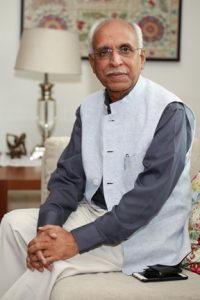
Keep recent incidence of alleged medical negligence while treating the patients in mind, today it is important to know that Why is the Society Angry with Medical Professionals? To understand this question, we must revisit the time when doctors were revered and literally placed next to God!. From that time till now there have been many changes in the understanding of illnesses, medical practices, technology and thereby expectations of the medical profession……
By Dr Vijay Aggarwal
Impact on lifespan: As life expectancy rose from 30 years plus in 1947 to approx 70 years in 2017, our expectation too rose that ‘all’ will live long lives. This belief was further fuelled by the rapid advances in medical science and technology – death from illness slowly became more and more unacceptable!
These changes were reflected across the lifespan – thus, introduction and acceptance of immunization programs resulted in many children living after age five; and mothers lived after childbirth as institutional deliveries became common. Alongside, while all this was happening, there were huge advance in anesthesia and surgical techniques, and gradually more and more patients began seeking medical services in their own cities.
1990, most people who could afford it, travelled to the US for medical procedures. With rapid adoption of advanced technology by doctors in India and number of premier institutions like AIIMS becoming Centres for Excellence and Learning turned the tide, and people began to rely on the services provided by hospitals in India and by doctors who were Indian. Unfortunately, the state-run hospitals alone could not keep up with this increasing demand from the society and the private health care sector, sensing an opportunity, began investing in physical infrastructure and handsome remuneration to doctors and other health care human resources.
Result: Our society, once mortally afraid of undergoing even a simple surgery, reacted to the favorable outcome and increased quality and quantity of life, by undergoing complex surgeries when required. Medical practice assumed heroic proportions and even complex life threatening cases were being treated in hospitals in the country.
Expectations from medical treatment hadreached a scale, where death is considered to be the result of a mistake. While this may be true some of the time, in most cases it is not. Medical treatment and its impact of health and life, is a complex interaction of many factors, which cannot be attributable to one factor alone.
Thus, death while undergoing treatment of complex diseases is a possibility that family, relatives and friends may not be willing to accept, which becomes a major cause of anger when it happens.
Cost of treatment: This changing scenario of private sector providing tertiary care was associated with high cost of medical and surgical treatment. There was a very high setting up expense involved (approx Rs 1 crore per bed) as well as huge operating expense. There was no preparation of the community for such an expense especially when the medical treatment in Government hospitals was provided ‘free’ for the patient by gathering tax payers’ money. On the other hand, the prompt, personalized, better service and treatment options in the private sector were appreciated by all, yet the high price was deeply resented and criticized especially when they were paying out of pocket and when comparisons were made with the ‘free’ government facilities.
Hospitalization expenditure is still hardly ever budgeted for in families and medical insurance has a low penetration. In spite of such a scenario, there has been a rapid expansion of private healthcare to meet the demand of the community. In fact, private hospitals in India are now attracting patients from overseas as the standards of service in these hospitals have increased and pricing was much lower in comparison. Interestingly, the pricing (even when they were paying 25 to 50% more) was considered very reasonable by International patients while domestic patients continued to complain!
One of the problems regarding pricing/billing has been lack of logic based billing in place of market driven pricing. In the current system (market driven), a hospital makes money on some products and loses money on many others. Fault finding by the community focused on areas where hospitals appeared to make high and unreasonable profits with no discussion on its overall economic situation.
There needs to be a wider debate and discussion about the economics of providing good healthcare to people. A misgiving about the cost of medical services is at the root of major discontentment. In spite of the fact that private hospitals are being blamed for looting and fleecing, most hospitals are financially stressed and most medical professionals are not earning as much as professionals in other fields.
To address this, there is a need to work towards transparency in pricing and a change in the billing system based on actual costing. This may not bring down the prices but will help both hospitals and community to understand the rationale of pricing.This is applicable for both private and the government runs hospitals.
If transparent pricing is required for the private sector, then the same is also true for the government run hospitals, but this is often not asked for since the service provided by the latter is perceived to be ‘free’. Thus, in comparison private sector charges appear to be high and unreasonable. Even after repeated requests, the government does not reveal its financial data to show how much are they spending for various procedures in their hospitals. Availability of this data will help everyone understand the relative cost and benefit of both.
A recent study done in Karnataka showed that Government is paying only about 50% as reimbursement for the cost of procedures, and hospitals are eventually loading their costs to regular paying patients.
This lack of transparency in billing and pricing by Government run hospitals results in anger in the community as they are unable to understand why the private sector charges are so high.
Medical Errors: The expectation from the treatment has reached a proportion where every unfavorable outcome is dissected till a mistake is found! There has been no exposure of the public that despite spending huge amounts and best intentions of doctors, medical errors will happen.
The fact that medical errors have become the 3rd leading cause of death in a developed country like USA is a pointer to the possible scenarios around the world especially in developing countries including India. One of the milestones to highlight that medical errors were not anecdotal but a regular feature even in the best of the hospitals was the famous article “To Err is Human” published by Institute of Medicine (IoM) in the year 2000.
The study estimated that as many as 98,000 people were dying every year from medical errors that occur in hospitals in the US – more than the death rate from motor vehicle accidents, breast cancer, or AIDS – three causes that receive far more publicattention. A 2006 follow-up of the IoM study found that medication errors were among the most common medical mistakes, harming at least 1.5 million people every year. The World Health Organization has recognized patient safety as an endemic issue of concern and has declared that healthcare errors impact 1 in every 10 patients around the world.
Nonetheless, these statistics are not a licence to kill for the medical profession; and the need to recognise that to increase the number of lives that continue to be saved is a call for administrators to do something more. The only way such errors can be minimized is to analyse the root cause. Most errors are due to systemic failures and hence punishing individuals is counterproductive.
To make systemic improvement, the Quality Council of India introduced NABH and NABL accreditation. Even after 12 years of the inception of this initiative, less than1% hospitals and labs are accredited. Them why some reasons are lack of skilled manpower and supporting infrastructure.
The need of the hour is raising the level of awareness in all sections of the population, the media with its reach and penetration would help by focusing on affirmative action that would encourage systemic improvements rather than wasting time on individual incidents and fuelling the now-common mistrust between the medical profession and public.
In addition the community needs to be educated that medical errors cannot be equated to criminal acts like murder and they need to be addressed through available redressal mechanisms like the Medical Council of India, consumer and/or other appropriate judicial forums
About Vijay Agarwal
Dr. Vijay Agarwal is currently the President of Consortium of Accredited Healthcare Organization (CAHO) and Advisor to Max Healthcare focused on Quality & Business Excellence. He is an Advisor to Global Association of Physician of Indian Origin.
Over the last four decades he has played a key role in making an impact in improving the state of Healthcare in India. He played an anchor role in driving national programs such as Pulse Polio Program and introducing Centralized Waste Management Scheme in Delhi. These programs have had far-reaching impact.
He has been the chairman of Nursing Home Forum of Delhi for ten years from 1992 to 2002.
Dr. Agarwal is a graduate and post graduate in pediatrics from the prestigious Maulana Azad Medical College and continues to leverage his expertise as an excellent organizer, strategist & administrator.
He is playing an important role in promoting quality through accreditation in Healthcare. He is the co-chairman of Accreditation Committee of NABH.
He has conceived the idea of training quality implementers in the country. Already, more than 280 professionals have been trained in the basic program approved by NBQP. The advanced program has been approved by HSSC
(Health Sector Skill Council) and has 80 plus professionals who have been trained.
He is the founder President of Society for Child Development. The society works towards vocational training of mentally challenged children and their work has foot prints all over the country.
He is a recipient of Distinguished Alumnus Award of Maulana Azad Medical College and Lifetime Achievement Award of Indian Medical Association.
(The author is President of Consortium of Accredited Healthcare Organization (CAHO)

